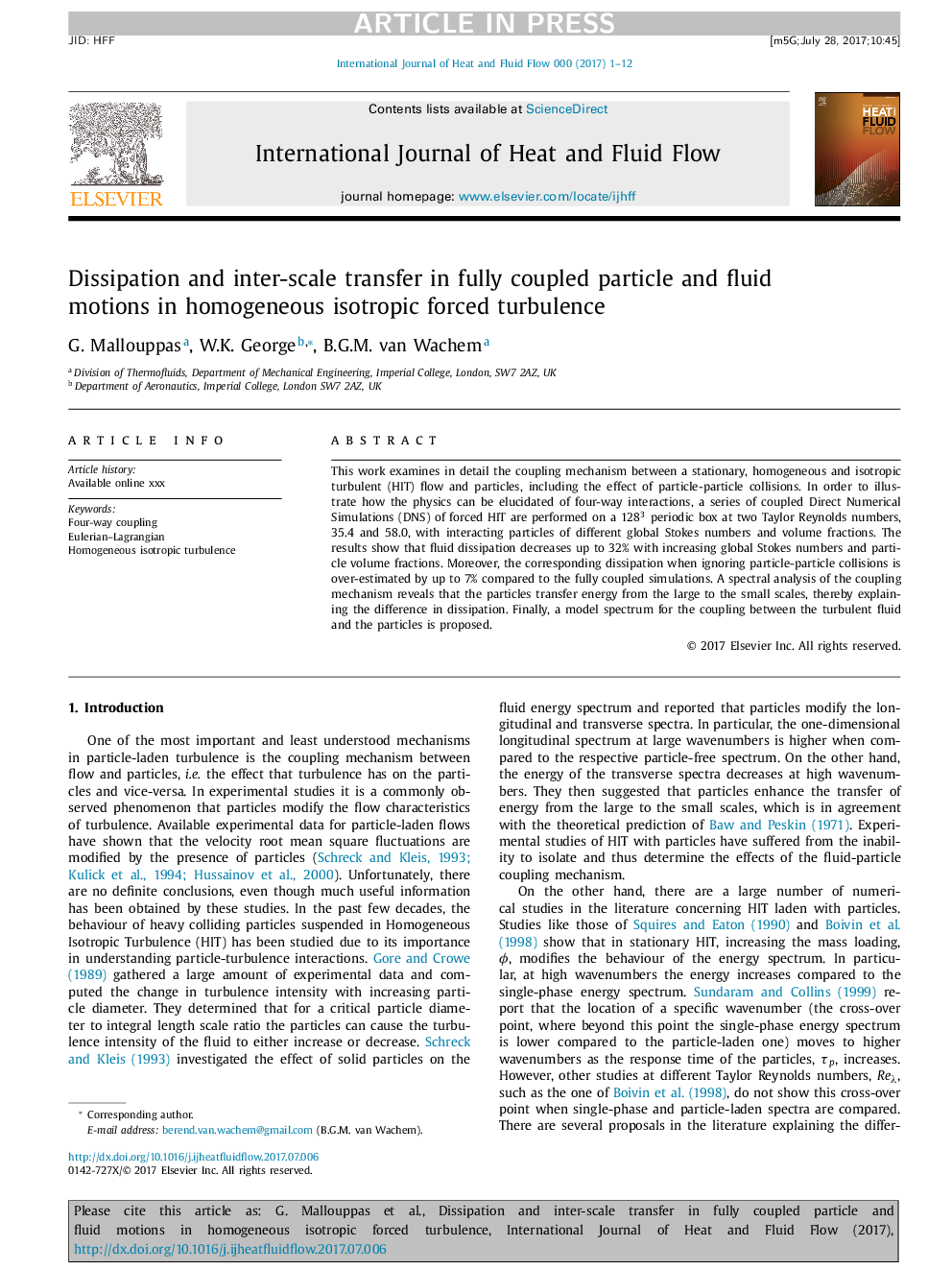| Article ID | Journal | Published Year | Pages | File Type |
|---|---|---|---|---|
| 7053573 | International Journal of Heat and Fluid Flow | 2017 | 12 Pages |
Abstract
This work examines in detail the coupling mechanism between a stationary, homogeneous and isotropic turbulent (HIT) flow and particles, including the effect of particle-particle collisions. In order to illustrate how the physics can be elucidated of four-way interactions, a series of coupled Direct Numerical Simulations (DNS) of forced HIT are performed on a 1283 periodic box at two Taylor Reynolds numbers, 35.4 and 58.0, with interacting particles of different global Stokes numbers and volume fractions. The results show that fluid dissipation decreases up to 32% with increasing global Stokes numbers and particle volume fractions. Moreover, the corresponding dissipation when ignoring particle-particle collisions is over-estimated by up to 7% compared to the fully coupled simulations. A spectral analysis of the coupling mechanism reveals that the particles transfer energy from the large to the small scales, thereby explaining the difference in dissipation. Finally, a model spectrum for the coupling between the turbulent fluid and the particles is proposed.
Related Topics
Physical Sciences and Engineering
Chemical Engineering
Fluid Flow and Transfer Processes
Authors
G. Mallouppas, W.K. George, B.G.M. van Wachem,
